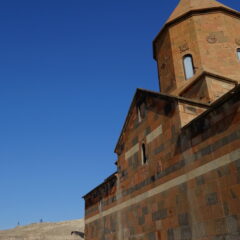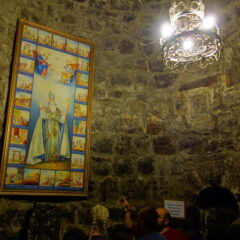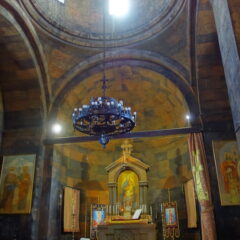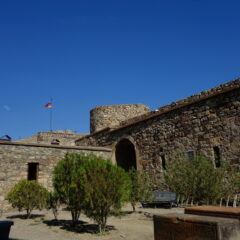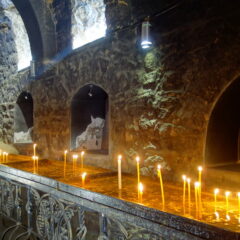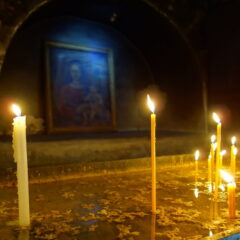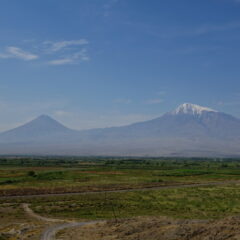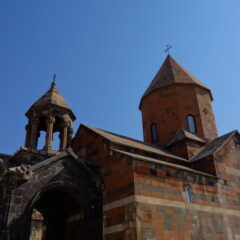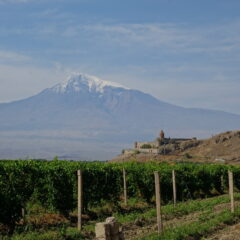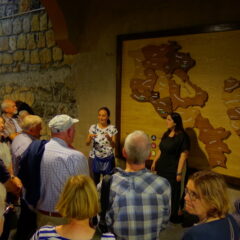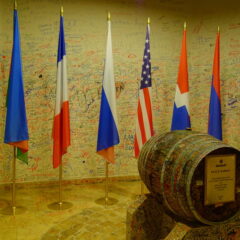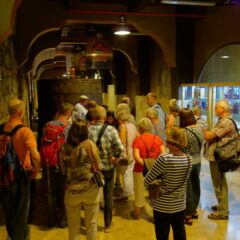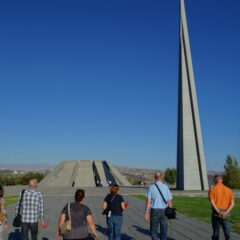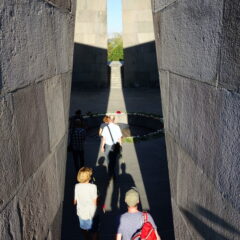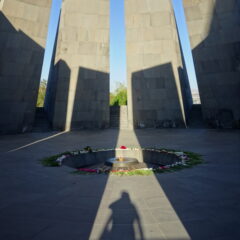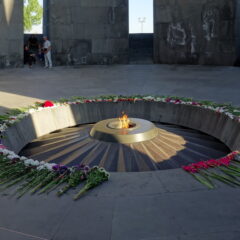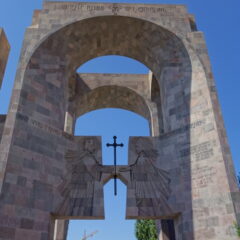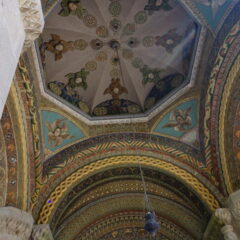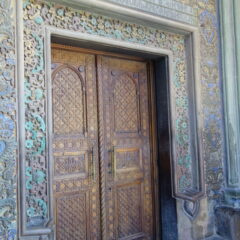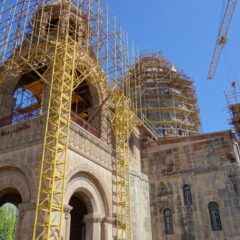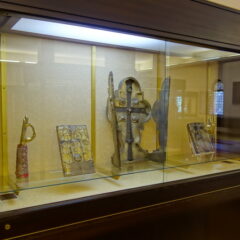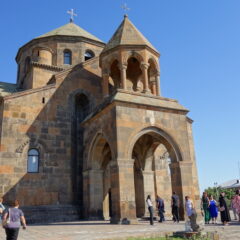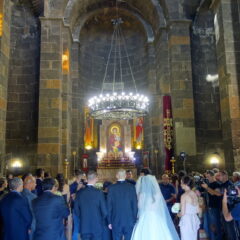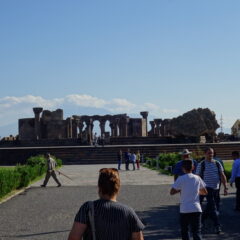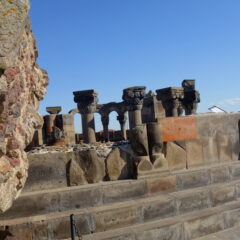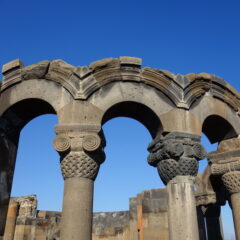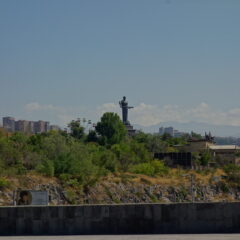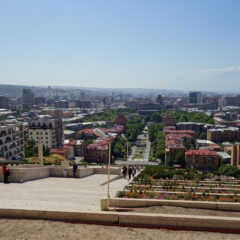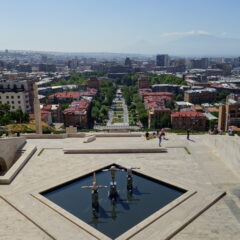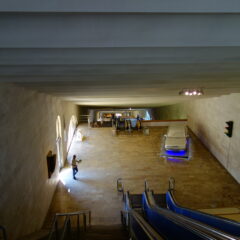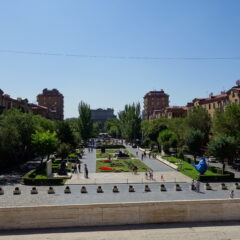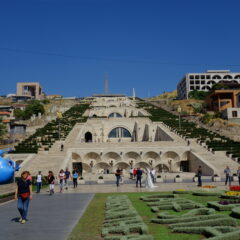Today we were about to learn, that no tourist day in Armenia is complete without at least two monasteries or churches.
We left Yerevan in the morning and were heading South. A drive of about 45 minutes or 45km got us to the Khor Virap monastery (Խոր Վիրապ).
The monastery is located on a hill with breathtaking views of Mt.Ararat.
It originally got built back in the middle of the seventh century; the location was picked, as it was the place, where Gregory the Illuminator was incarcerated in a pit for twelve years in the late third century, before becoming a mentor to the then king of Armenia, who finally ended up declaring Armenia a Christian country in 301 AD. As a result the monastery is of great significance to the Armenian Church and remains an important pilgrimage site until today.
Over the centuries the monastery got destroyed a number of times; the current reconstruction dates back to the second half of the 17th century.
We had a visit around the premises and buildings – all with plenty of details and background. Those eager to do the climb down into the dungeon (essentially an attempt of a reproduction of Saint Gregory’s pit), had the chance, to do so. Surely there was also enough time, to enjoy the views of Mt.Ararat.


